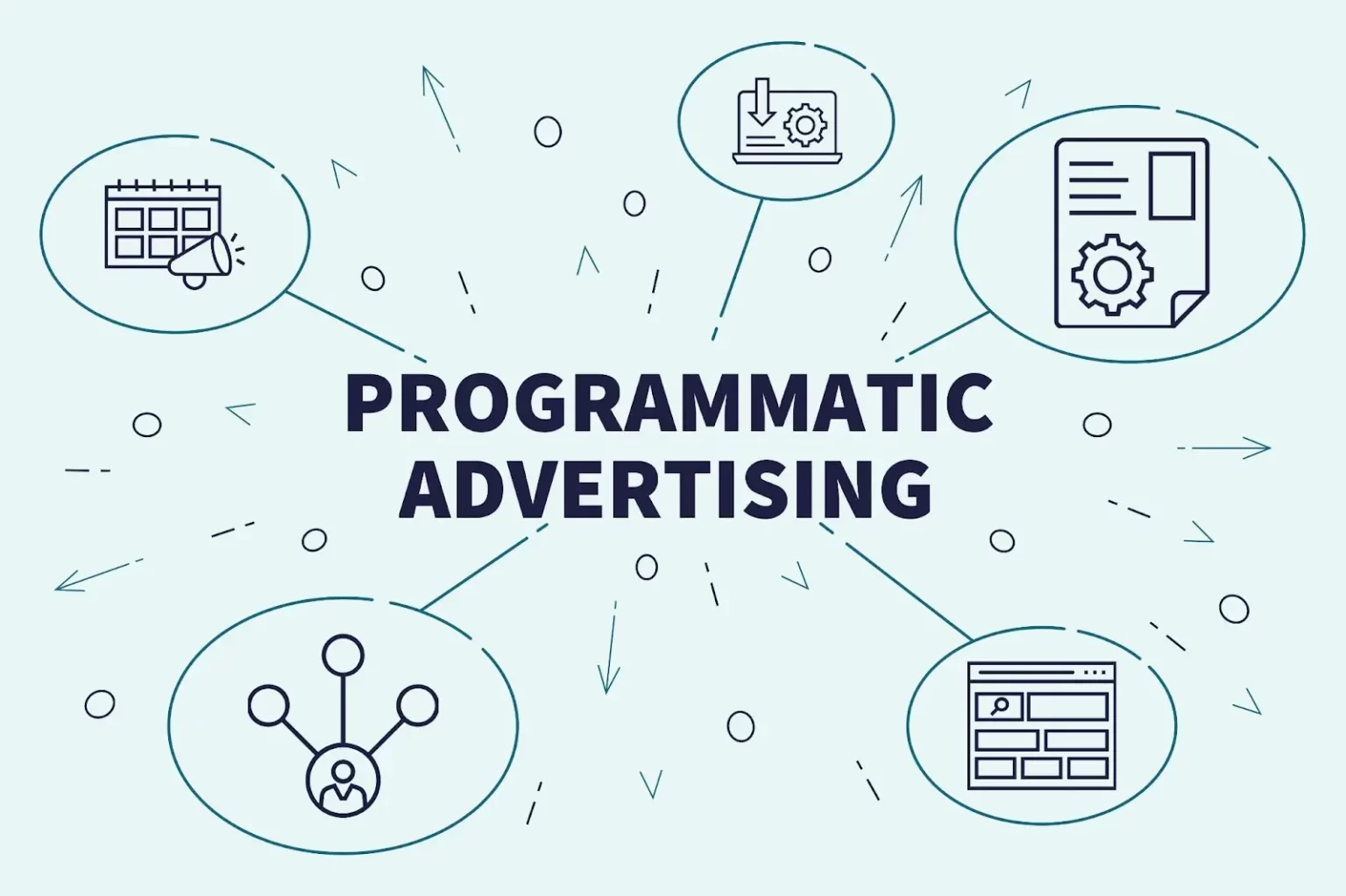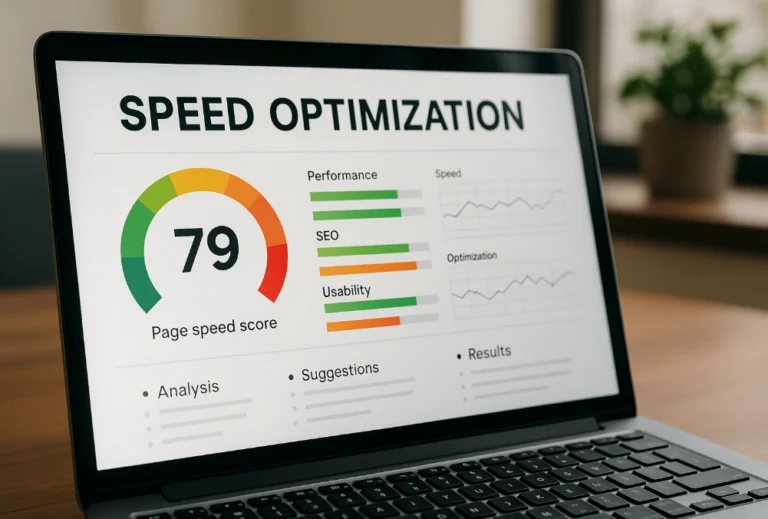Ever scrolled through your social media feed and seen an ad for that perfect pair of running shoes you were just researching? It’s not a coincidence. This is the power of programmatic advertising, a sophisticated approach that’s revolutionizing how businesses target online audiences.
In this article, we’ll explore the benefits of programmatic advertising and how you can use it to expand your reach and get more sales.
What is Programmatic Advertising?
Gone are the days of manual ad negotiations and hoping your message reaches the right people. Programmatic advertising leverages cutting-edge technology to streamline the process of buying and selling ad space across websites and apps. Here’s the breakdown: advertisers define their ideal audience and desired outcomes, while real-time auctions determine which ad gets displayed on the most relevant platforms. It’s an automated system that ensures your message reaches the most receptive viewers at the perfect moment.
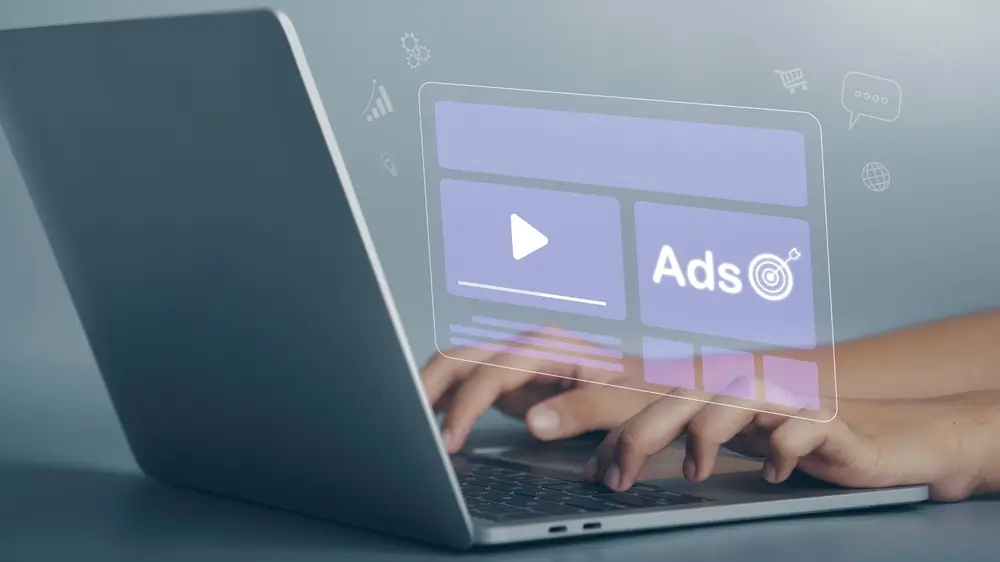
How Does Programmatic Advertising Work?
Programmatic advertising operates within a digital marketplace. Publishers (website or app owners) showcase their ad space, and advertisers compete for the most impactful placements.
Through a Demand-Side Platform (DSP), you define your target audience and goals (brand awareness, website traffic, etc.). The DSP then enters your criteria into ad exchanges where auctions happen in milliseconds. If your bid is the highest for an impression (opportunity to display your ad) that aligns with your targeting, your ad is displayed on the publisher’s website or app, reaching your ideal audience. This entire process is automated and data-driven, ensuring efficient ad placement.
Why is Programmatic Advertising Important?
Attention spans today are fleeting, and competition is fierce. Programmatic advertising empowers businesses to cut through the noise and achieve their marketing goals with incredible efficiency:
Reach a Wider Audience
Target specific demographics, interests, and online behavior across a vast network of websites and apps. Imagine reaching not just people searching for “running shoes,” but those researching specific brands or technologies, all within your budget.
Optimize Ad Spend
Automate bidding strategies and allocate budgets efficiently. Programmatic advertising allows you to set parameters and let the technology work its magic, maximizing your return on investment (ROI).
Gain Valuable Data
Track campaign performance in real time. Unlike traditional advertising methods, programmatic campaigns provide detailed insights into user behavior, allowing you to constantly optimize and refine your approach for maximum impact.
What are the benefits of programmatic advertising?
Struggling to reach the right audience online? Programmatic advertising can be your secret weapon. It cuts through the complexity of digital marketing by automating tasks, maximizing your reach, and giving you valuable insights to optimize your campaigns.
Here’s how:
Efficiency
Forget endless phone calls and manual ad management. Programmatic advertising automates everything. Set your budget, define your target audience, and let the technology handle the rest. It finds the best ad spots and negotiates bids in real time, ensuring your ads are seen at the perfect moment.
Reach
Imagine reaching your ideal customers across the entire internet, not just a few websites. Programmatic advertising opens doors to a massive network of publishers. You can target specific demographics, interests, and online behavior. This means your ads can appear in front of people actively considering products or services like yours, skyrocketing your chances of conversions.
Transparency
Unlike traditional advertising where results are a mystery, programmatic advertising offers complete transparency. Detailed reports show you exactly how your campaigns are performing, including impressions, clicks, and conversions. This real-time data lets you identify areas for improvement, refine your targeting, and ensure your budget is spent wisely.
Measurement
No more guesswork! Programmatic advertising allows you to measure campaign success with laser precision. Track key metrics like website traffic, engagement rates, and conversions, all in real-time. This data empowers you to constantly improve your strategy and ensure your ads deliver the biggest impact.
What are the challenges of programmatic advertising?
Programmatic advertising offers a wealth of benefits, but it’s not without its hurdles. While it automates tasks and streamlines processes, there are still potential roadblocks to consider.
Here’s a breakdown of the key challenges associated with programmatic advertising, along with steps you can take to navigate them successfully:
Commoditization
The automated nature of programmatic advertising can make it challenging for your ads to stand out in a crowded digital space. Creative ad formats and high-quality content are still crucial to capture attention.
Transparency Concerns
Fraudulent activity can occur within programmatic ecosystems. Mitigating this risk involves partnering with reputable providers with robust security measures in place.
Learning Curve
Understanding the technology and best practices involved in programmatic advertising requires an initial investment in learning. Consider partnering with a programmatic consultant or programmatic marketing companies to help you navigate the complexities and optimize your campaigns for success.
What is the difference between programmatic advertising and display ads?
Programmatic advertising and display ads are not the same thing. Think of it like this: programmatic advertising is the method for buying and selling ad space across websites and apps. It uses automation and real-time auctions to efficiently place your ads. Display ads, on the other hand, are the actual format of the ad itself, like banners, pop-ups, or video ads. So, programmatic advertising can be used to place any type of display ad, not just the other way around.
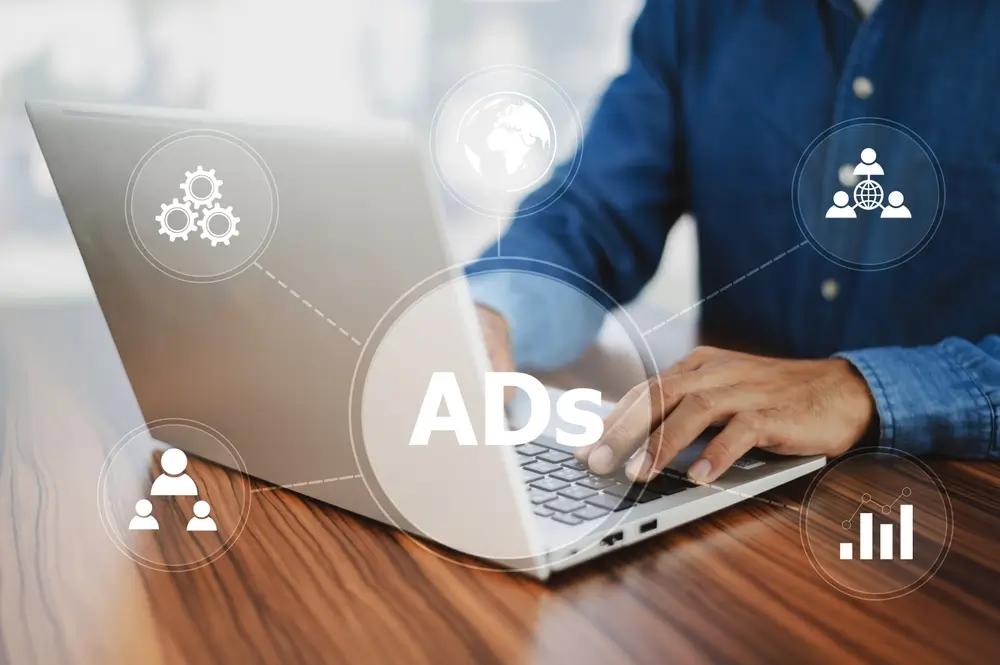
What are programmatic advertising platforms and tools?
Programmatic advertising relies on a complex ecosystem of platforms and tools to function smoothly.
Here’s a breakdown of the key players:
Demand-Side Platform (DSP)
This is your mission control center. You use a DSP to manage programmatic campaigns, set bidding strategies, and target specific demographics or interests. Imagine it as the platform where you define your goals and tell the system who you want to see your ads.
Supply-Side Platform (SSP)
Think of this as the publisher’s side of the marketplace. Publishers use SSPs to manage their ad inventory and connect with advertisers through programmatic exchanges. Essentially, the SSP allows publishers to showcase their available ad space to potential buyers.
Ad Exchange
This is the digital marketplace where impressions (opportunities to display your ad) are bought and sold in real-time auctions. The DSP you use submits your campaign criteria to the ad exchange, which then identifies relevant ad inventory from SSPs.
Data Management Platform (DMP) (Optional)
A DMP is a powerful tool that allows you to collect and manage audience data from various sources. This data can then be used to create more targeted campaigns within your DSP. Think of it as a central hub for all your audience information, helping you build a clearer picture of who you want to reach.
How and why is programmatic advertising successful?
Programmatic advertising thrives on a win-win scenario for both advertisers and publishers. Advertisers gain efficient, laser-focused audience reach with real-time data to optimize campaigns. Publishers benefit from automated ad inventory management, potentially reaching a wider pool of advertisers, and maximizing their revenue. This creates a powerful synergy that fuels the success of programmatic advertising.
How to do programmatic advertising?
Programmatic advertising requires planning and execution, but here’s a roadmap to get you started:
- Define Your Goals
This is the foundation. Determine what you want to achieve with your campaign (brand awareness, website traffic, etc.) and who your target audience is.
- Consider a Programmatic Consultant
An experienced consultant can guide you through the complexities of programmatic advertising, set up your campaigns, and optimize them for success. This can be especially helpful if you’re new to the space.
- Choose a Demand-Side Platform (DSP)
This is your control center. Research and select a reputable DSP that aligns with your budget and campaign goals. There are various options available, so compare features and pricing to find the best fit.
- Develop Compelling Creatives
High-quality ad creatives are essential to grab attention and drive results. This could involve captivating visuals, clear messaging, and formats that resonate with your target audience.
- Monitor and Optimize
Don’t set your campaigns and forget them! Programmatic advertising is an ongoing process. Regularly monitor performance data, analyze insights, and make adjustments as needed to optimize your results and maximize your return on investment (ROI).
Types of programmatic advertising
Programmatic advertising offers a buffet of options, but with so many choices, it can be overwhelming. Don’t worry, we’ve got you covered.
Here’s a breakdown of the most common programmatic buying methods to help you pick the one that best suits your campaign goals:
1. Open Marketplaces
Open marketplaces are like free-for-alls. Advertisers compete in real-time auctions for ad space across a massive network of websites and apps. This method offers the broadest reach and is perfect for brand awareness campaigns where you want to get your name out there. Just be prepared for competition – it can drive up the cost per impression.
2. Private Marketplaces
Private marketplaces invite select advertisers to bid on premium ad inventory from specific publishers. This approach gives you more control over where your ads appear and can lead to higher-quality placements, but the audience reach might be smaller compared to open marketplaces.
3. Preferred Deals
Preferred deals let you negotiate directly with publishers you value. You can agree on fixed pricing or priority access to their ad inventory. This method offers a sweet spot between reach and control. Your ads appear on specific high-performing websites, potentially at a better cost than private marketplaces.
4. Programmatic Guaranteed
Programmatic guaranteed provides ultimate security. You secure a specific amount of ad inventory at a fixed price in advance. This guarantees exposure on desired publisher sites and offers predictable costs and impressions. However, programmatic guaranteed gives you less flexibility to adjust your strategy compared to other methods.
What are examples of good programmatic advertising?
Programmatic advertising can be a powerful tool for achieving specific goals.
Consider these examples:
- An animal shelter used programmatic advertising to target users interested in pets. By analyzing browsing habits, they displayed ads to people who seemed like a good fit for the animals available for adoption. This resulted in a significant increase in website traffic and successful adoptions.
- A fast food chain leveraged programmatic advertising to deliver personalized messages. They used user location and time of day to tailor their ads. For instance, someone near a McDonald’s during breakfast hours might see an ad for their Egg McMuffin. This real-time, location-based approach increased brand awareness and sales.
How much does programmatic advertising cost?
Programmatic advertising costs can vary greatly depending on several factors, including the type of buying method chosen (open marketplaces tend to be cheaper than private marketplaces), the targeted audience, and the overall campaign goals. The most common metric used is Cost-Per-Thousand-Impressions (CPM), which can range anywhere from $0.50 to $5.00 on average, but can be much higher depending on the factors mentioned above.

How do I measure programmatic advertising?
Programmatic advertising offers a treasure trove of data for measuring campaign performance.
Here are some key metrics to track:
- Impressions: This counts the number of times your ad is displayed, regardless of whether it’s clicked on. It provides a baseline for reach and awareness.
- Clicks: This measures how many times users actually clicked on your ad. It indicates user engagement and potential interest in your product or service.
- Click-Through Rate (CTR): This metric divides clicks by impressions, giving you a percentage of how effective your ad was in capturing attention and driving clicks.
- Conversions: This is the ultimate goal! It tracks how many clicks resulted in a desired action, such as a website sale, form submission, or phone call.
- Cost-Per-Acquisition (CPA): This metric divides your total ad spend by the number of conversions, giving you the average cost to acquire a new customer.
By monitoring these metrics within your DSP (Demand-Side Platform), you can gain valuable insights into campaign performance. This allows you to identify areas for improvement, optimize your targeting strategy, and ensure your budget is delivering the biggest impact.
Reap the Rewards: Mastering Programmatic Advertising for Success
Programmatic advertising has revolutionized the way businesses reach target audiences online. It offers a powerful combination of automation, efficiency, and valuable data insights. By understanding how programmatic advertising works, its benefits, challenges, and how to choose the right approach, you can unlock the true potential of programmatic advertising and achieve your marketing goals.
Remember, programmatic advertising is a complex landscape, and navigating it successfully can be easier with the guidance of experts. Lead Origin, a leading digital marketing agency in San Francisco, can help you develop and execute data-driven programmatic campaigns that deliver measurable results. Their team of specialists can help you define your goals, choose the ideal programmatic approach, and optimize your campaigns for maximum impact.
Ready to harness the power of programmatic advertising? Contact Lead Origin today and see how they can help your business thrive in the digital age.
